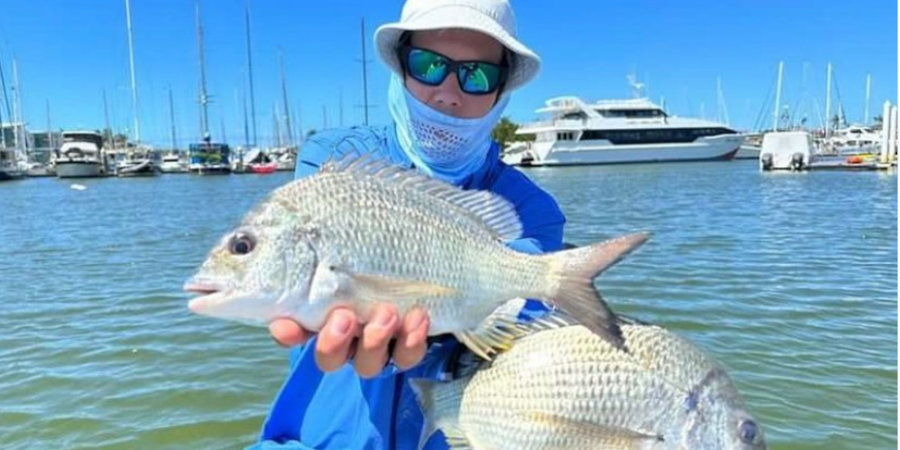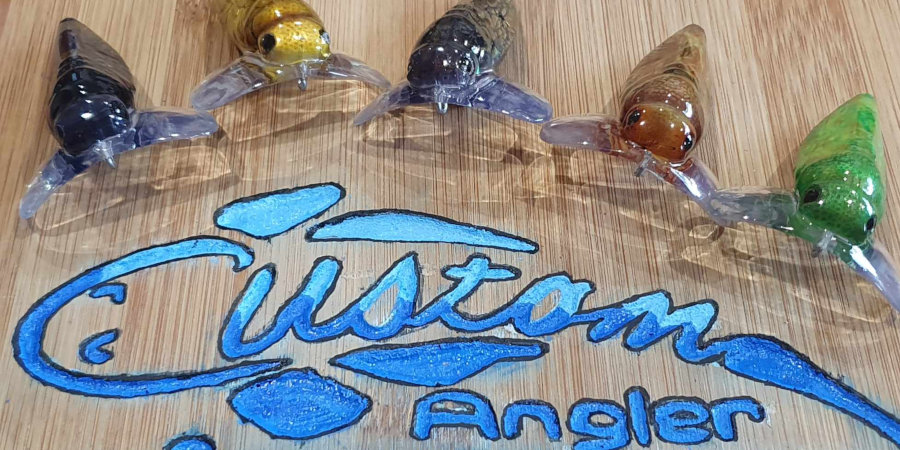

Jamie Mckeown
Bream Tournament Fisher And Guide
Jamie is an SEQ based tournament bream angler with plenty of results on the board, including some placings for events held in the Pumicestone Passage. When he’s not competing, Jamie has set up a guiding business to help everyone from beginner families to aspiring tournament anglers looking for some tips.Jamie’s Top Bream Fishing Tips
- Bream habitat at the southern end of Pumicestone Passage is wide and varied, but the remnant disused oyster racks and extensive weed beds between Cook’s Rocks and the mouth of Ningi Creek provide enough opportunities to keep an angler going for days. If he wants to fish to his strengths Jamie will sometimes head for the northern end of the passage and fish the canals at Caloundra.
- Jamie favours the last of the run-in tide and the first of the run-out, finding that bream follow the rising water and feed actively over the intertidal areas as the flood, then fall back into drainage channels as the tide recedes. Fishing the flats and weed beds with topwater lures is effective around dawn and dusk.
- During the warmer months Jamie doesn’t pay too much attention to weather conditions, lunar cycles and so on, as bream are responding mainly to the tides.
- Bream that are up off the bottom around bridge pylons, pontoons and other structure are there to feed actively, so they’ll often respond willingly to topwaters or hard bodies.
Jamie’s Preferred Bream Fishing Tackle
- Jamie reckons there’s no need to mortgage the ranch to buy bream fishing gear. A few hundred dollars will be enough to get what you need.
- A 7’ Samaki Archer 2-4kg rod with a 2500 size Daiwa Exceler spin reel and 6lb braid will handle most bream fishing for the weekend angler or aspiring tournament angler. Jamie likes suffix fluorocarbon leaders in the 6-8lb range.
Jamie’s Top Bream Fishing Lures
- The Cranka Crab is Jamie’s #1 bream lure for Pumicestone Passage. He likes to cast this lure tight to structure along rock walls, bridges, pylons and pontoons, anywhere that crabs would naturally be present. The lure is allowed to sink naturally as Jamie watches the line for “ticks” and readies himself to set the hooks by winding the fish on (not striking in the traditional sense). When fishing in currents Jamie uses adhesive 5 and 10g wheel-balancing weights with super glue to add weight towards the back of his crabs, on the underside. This allows them to still fall naturally but keeps them in the zone longer when there is current. If a crab reaches the bottom without being taken it can be worked with gentle, subtle movements for a bit, then cranked in and cast again. The key is to make the lure move like a natural crab. Sometimes Jamie will “daisy chain” the claws with extra split rings to lift the hooks up and convert the timid biters.
- The 67mm OSP bent minnow is Jamies favourite topwater lure and is extremely versatile. He’ll use it over flats and disused oyster racks at the southern end of the passage, focussing on those fish moving up onto the flats and following the water level up. But he’ll also use it around bridges, pontoons, pylons and other structure if fish are seen up off the bottom feeding. Cast the lure close to structure/fish and work it with a quick, erratic movement for the first 2-3m then pause. After that just use small twitches to make the lure dip beneath the surface and throw up the occasional splash. A slow retrieve a couple of inches beneath the surface is an effective technique also.
- The 50mm Ecogear Aqua Bream Prawn in Salt and Pepper colour is a great lure to use where there is current. Typically Jamie will start by rigging it on a 1/50 oz jig head, but he’ll adjust the weight depending on conditions. This is a lure that is essentially dead sticked, casting it as close as possible to structure and allowing it to waft naturally on the currents without imparting action. By allowing the boat to drift parallel to a rock wall, Jamie can cast the lure close to structure and let it drift along naturally, managing the line to detect bites and wind the fish on.
- The 40mm Zipbaits Khamsin Tiny is a great hard body lure for working through the shadows of pontoons, bridge pylons and other structure. Any colour will do, if it has some chrome-like flash about it. This lure can be effectively fished to pontoons repeatedly when other lures would eventually spook the bream. Look where there is a bit of a flow and cast past the pontoon, winding back along the length. Jamie will sometimes tune his lure to swim slightly left or right, causing it to track beneath the structure and putting it in the strike zone. Bumping it against the pontoon or bridge pylon will usually attract attention.

Fishing In Hobart: A Bream Masterclass With Plinio And Deathy
Check out a swag of little known techniques and insights for fishing the Derwent River system for bream in this awesome interview with Plinio Taurian.

Fishing At Forster: 5 Top Spots With Local Gun Luke Austin
The fishing at Forster – Tuncurry is superb, all year round with numerous options for land-based and boating anglers alike. Luke Austin has lived there all his life and shares some great spots for visiting anglers and locals alike.
Unveiling the Secrets of Tuggerah Lake Fishing: Adam Amos on Bream
Tuggerah Lake Fishing is EPISODE 668. Check out our archives for more information on Bream Fishing!Introduction to Tuggerah Lake Fishing Tuggerah Lake, nestled on the NSW Central Coast, is a prime destination for bream fishing, easily accessible from Sydney. It's a...

Ben Monforte’s Revolutionary Approach to Moreton Bay Bream Fishing
Ever considered using Japanese Free Rigging techniques to target bream? That’s exactly what today’s guest Ben Monforte shares with us in a fascinating techniques-based interview.

On Yamba Bream, Pimping Lures and the WRFL With Laurie Anderson
Yamba can be an exceptional fishing spot – and bream are high on the list of targets for many anglers. Tournament fisho and lure customiser Laurie Anderson shares her tips and advice in this episode.

Fishing In Hobart: A Bream Masterclass With Plinio And Deathy
Check out a swag of little known techniques and insights for fishing the Derwent River system for bream in this awesome interview with Plinio Taurian.

Fishing At Forster: 5 Top Spots With Local Gun Luke Austin
The fishing at Forster – Tuncurry is superb, all year round with numerous options for land-based and boating anglers alike. Luke Austin has lived there all his life and shares some great spots for visiting anglers and locals alike.
Unveiling the Secrets of Tuggerah Lake Fishing: Adam Amos on Bream
Tuggerah Lake Fishing is EPISODE 668. Check out our archives for more information on Bream Fishing!Introduction to Tuggerah Lake Fishing Tuggerah Lake, nestled on the NSW Central Coast, is a prime destination for bream fishing, easily accessible from Sydney. It's a...


0 Comments